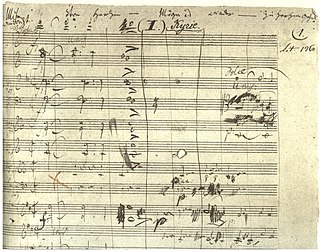
The Missa solemnis in D major, Op. 123, is a Solemn Mass composed by Ludwig van Beethoven from 1819 to 1823. It was first performed on 7 April 1824 in Saint Petersburg, Russia, under the auspices of Beethoven's patron Prince Nikolai Galitzin; an incomplete performance was given in Vienna on 7 May 1824, when the Kyrie, Credo, and Agnus Dei were conducted by the composer. It is generally considered one of the composer's supreme achievements and, along with Bach's Mass in B minor, one of the most significant Mass settings of the common practice period.

Great Mass in C minor, K. 427/417a, is the common name of the musical setting of the mass by Wolfgang Amadeus Mozart, which is considered one of his greatest works. He composed it in Vienna in 1782 and 1783, after his marriage, when he moved to Vienna from Salzburg. The large-scale work, a missa solemnis, is scored for two soprano soloists, a tenor and a bass, double chorus and large orchestra. It remained unfinished, missing large portions of the Credo and the complete Agnus Dei.

Knut Nystedt was a Norwegian orchestral and choral composer.
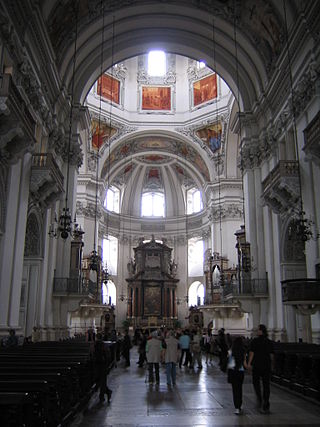
The Krönungsmesse, composed in 1779, is one of the most popular of Wolfgang Amadeus Mozart's 17 extant settings of the Ordinary of the Mass. It can be classified as either a Missa brevis or a Missa solemnis because although it includes all the sections of the Ordinary, it is relatively short.

Missa brevis is Latin for 'short Mass'. The term usually refers to a mass composition that is short because part of the text of the Mass ordinary that is usually set to music in a full mass is left out, or because its execution time is relatively short.

The Missa Brevis in D, Op. 63, is a setting of the Latin mass completed by Benjamin Britten on Trinity Sunday, 1959. Set for three-part treble choir and organ, it was first performed at London's Roman Catholic Westminster Cathedral on 22 July of the same year. Britten composed the mass for George Malcolm's retirement as organist and choirmaster at Westminster: the printed dedication reads "For George Malcolm and the boys of Westminster Cathedral Choir". It remained Britten's only liturgical setting of the mass. Malcolm's live recording, from a service at the cathedral, lasts ten minutes.
Harald Feller is a German organist, choral conductor and composer teaching at the Hochschule für Musik und Theater München. He was awarded the 1983 Grand Prix du Disque Liszt.

The Missa brevis No. 9 in B-flat major by Wolfgang Amadeus Mozart, K. 275/272b, was probably written before September 1777 for Salzburg. The mass is scored for SATB soloists, SATB choir, violin I, violin II, 3 trombones, string bass, and organ.

The Missa brevis No. 8 in C major, K. 259, is a mass composed by Wolfgang Amadeus Mozart in 1776. It is scored for SATB soloists, SATB choir, violin I and II, 2 oboes, 2 clarini, 3 trombones colla parte, timpani and basso continuo.

The Credo Mass in C major, K. 257, is a mass composed by Wolfgang Amadeus Mozart in 1776. It is scored for SATB soloists, SATB choir, violin I and II, 2 oboes, 2 clarini, 3 trombones colla parte and basso continuo.

Thomas Gabriel is a German church musician, composer and arranger.
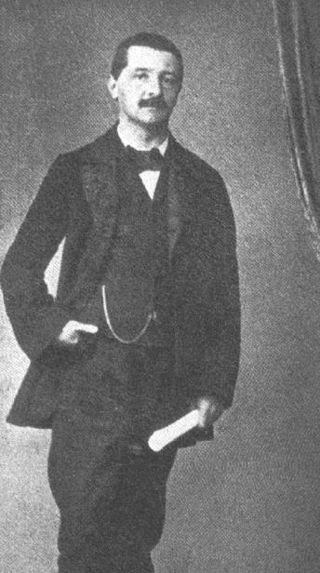
The Windhaager Messe, WAB 25, is a missa brevis composed by Anton Bruckner in 1842.

The Kronstorfer Messe, WAB 146, is a missa brevis composed by Anton Bruckner in 1843-1844.

The Messe für den Gründonnerstag, WAB 9, is a missa brevis composed by Anton Bruckner in 1844.
The Missa Brevis is a mass written by Giovanni Pierluigi da Palestrina first published in 1570 in Palestrina's Third Book of Masses and reprinted several times since. Its title may be misleading, as a missa brevis commonly refers to a short mass, which this is not. It is among the most performed of Palestrina's polyphonic repertoire.
Messe en sol majeur, FP 89, is a missa brevis by Francis Poulenc. He set most parts of the Latin mass to music in 1937, scored for a mixed choir a cappella.
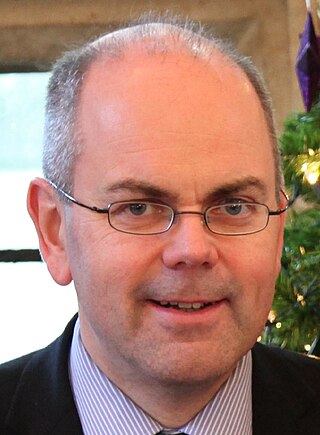
Messe in G is a mass in G major by the English composer Christopher Tambling. He composed it in 2013, scored for mixed choir, orchestra and organ. It was first published in 2014.

The Missa angelica is a mass composed by Józef Świder in 1998. He scored it for soprano or tenor solo, a four-part choir, string orchestra and percussion. He also wrote a version for women's choir and keyboard instrument. It was published by Carus-Verlag in 2009.
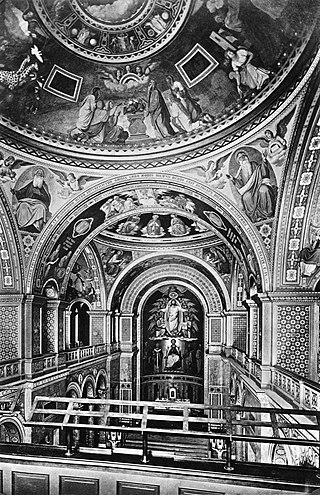
The Mass in A major, Op. 126, is a setting of the mass ordinary in Latin by Josef Rheinberger. He composed it in 1881, originally for a three-part choir (SSA) with organ. When he conducted the first performance at the Allerheiligen-Hofkirche in Munich on Christmas Eve, he added a flute and a string quintet. He wrote a version with orchestra later.

Messe in A is a mass in A major by the English composer Christopher Tambling. The first version was published in 2010, scored for two high voices, the second of them optional, accompanied by organ with optional strings. It was written with boys' choirs in mind, but is also suitable for girls' choirs and women's choirs. A version for four-part choir, organ and optional orchestra was published in 2016.











